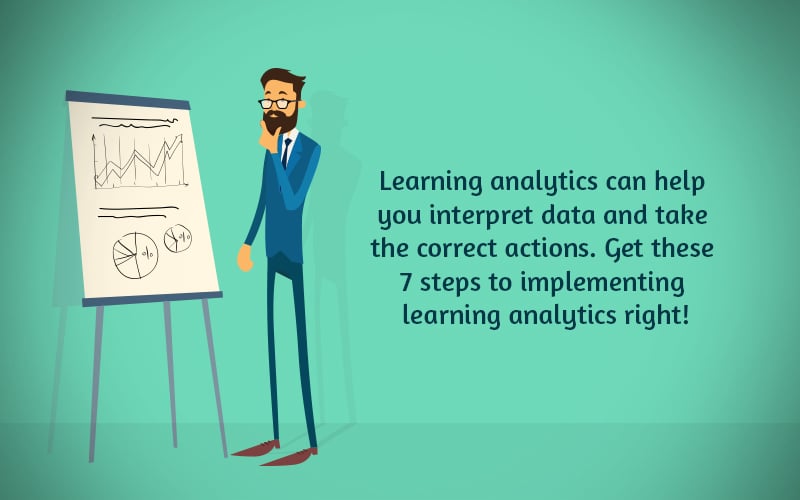Learning Analytics and its Role in eLearning Assessments [SlideShare]
![Learning Analytics and its Role in eLearning Assessments [SlideShare] Learning Analytics and its Role in eLearning Assessments [SlideShare]](https://blog.commlabindia.com/hubfs/Imported_Blog_Media/learning-analytics-elearning-assessments-role-slideshare.jpg)
Assessments are an important part of training programs that help determine if the goals of the training program were met. The fact that learners completed an online training program does not by itself guarantee its success; similarly, learners achieving a high score in assessments in an eLearning course does not mean they have gained a thorough understanding of the subject. So, how do you judge if the assessments in your online training program are effective? Through learning analytics, of course!
Types of Learning Analytics
- Descriptive analytics
- Diagnostics analytics
- Predictive analytics
- Prescriptive analytics
Learning analytics can help you understand whether your training programs achieved the desired outcomes and improved productivity. Learning analytics is the collection, measurement, analysis, and reporting of data about learners and their contexts, to understand and optimize learning and the environments in which it occurs.
Take the guesswork out of your eLearning assessments.
Learning analytics help improve organizational performance by reporting learner-data, which can be used to improve existing training programs and design new ones. Analytics can also reveal learner preferences, such as specific design features and formats.
You can use this data to decide which parts of a course (or even entire courses) are effective (or otherwise) and take necessary actions. With learning analytics in the system, you will get answers to questions on ROI of a particular training program and how the training can be improved going forward.
3 Pillars of Learning Analytics
Data: Collecting data that provide analytical insights.
Analysis: Applying research methodologies and adding intelligence to data using algorithms.
Action: Taking steps toward informed decisions, applying the insights gained, and attaining the desired goal.
Types of Learning Analytics
There are four types of learning analytics that help L&D professionals make data-driven decisions.
Descriptive Analytics (what happened?): Collates data from multiple sources about what happened.
Diagnostic Analytics (why did it happen?): Identifies patterns and offers insights into a problem or opportunity.
Predictive Analytics (what will happen?): Identifies possible difficulties and opportunities that provide specific learning support.
Prescriptive Analytics (how can we make it happen?): Helps to plan for interventions to improve training efficacy.
The Role of Learning Analytics in eLearning Assessments
Learning analytics and training evaluation are two sides of the same coin. Both aim to improve the efficiency of training. If organizations don’t make use of learning analytics, then training evaluation isn’t going to be very effective.
Another reason to implement learning analytics to evaluate training is the ubiquity of big data and the role learning data plays in pushing the business forward. Learning analytics enable organizations to make well-informed decisions regarding their training and take a clear, hard look at their investments.
Learning analytics in formative assessments help:
Track learners’ progress: Reveal distinct performance patterns so that you can evaluate content and check if assessments match the content.
Identify areas of improvement: Indicate learners’ weak points and data to improve or refresh their knowledge.
Provide personalized feedback: Keep track of real-time performance on assessments so feedback can be provided immediately.
Learning analytics in summative assessments help:
Predict learners’ performance: Collate and display each learner’s level of understanding from past assessments, to improve their performance.
Design adaptive assessments: Help develop adaptive assessments to shorten the time for learners to adapt to the content and offer more precise evaluations.
That was all about of learning analytics in eLearning. Let’s now go through the 5 steps for successful implementation of learning analytics.
Summing it Up!
While this was all about implementing learning analytics, knowing about the other aspects of learning analytics will help you build a strong case for it. Here’s a useful resource that’ll help you successfully implement learning analytics in your organization.



![5 Benefits of Learning Analytics [Infographic]](https://blog.commlabindia.com/hubfs/Imported_Blog_Media/online-learning-facts.jpg)

